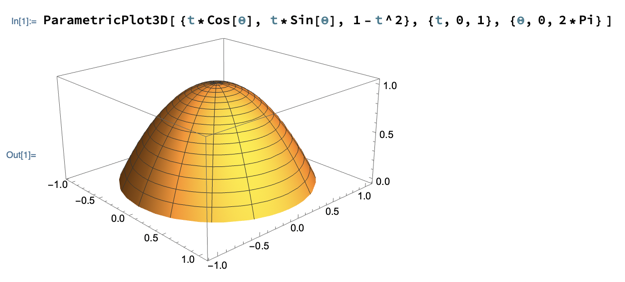Anything You Want to Talk About?
(No.)
Surface Area
Based on “Surface Area of a Parametric Surface” in section 5.6 of the textbook.
Key Ideas
The definition of a parametric surface (see Wednesday’s notes).
The equation for surface area, which builds on lots of previous vector operations, vector calculus, etc: for surface r(u,v), on parameter domain D…
Examples of applications to various shapes.
Examples
Parameterize the surface (without ends) of a cylinder of radius r and height h, and use the integral formula for surface area to derive the equation S = 2πrh for that cylinder’s surface area (textbook exercise 5.6.6).
The first step is to come up with a parametric description of the cylinder. Think of it as a parametric circle, with a z coordinate that lets it extend over a third dimension:
Then we needed the derivatives of the surface with respect to each variable:
From the derivatives, we worked out their cross product:
And then the magnitude of the cross product:
Finally, we integrated the magnitude over the parameter domain. The result did indeed agree with the geometric formula:
Use Mathematica to find the surface area of the parabolic “hill” parameterized as r(t,Θ) = ⟨ t cosΘ, t sinΘ, 1-t2 ⟩. Plot it first if you want to see what the surface looks like.
We didn’t have time to do much with this, other than look at the plot. You can download the Mathematica notebook that produced this plot (and more):

We’ll calculate the surface area in class Monday.
Next
Look at using Mathematica with surface area calculations, specifically the hill.
A bit about (scalar) surface integrals if there’s time.
No required reading, but scalar surface integrals are “Surface Integral of a Scalar-Valued Function” in section 5.6 of the textbook if you want to look at it.